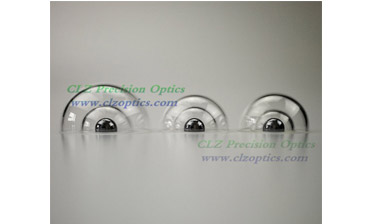What is the Cold Working Procedure for Optical Lenses?
Jun. 06, 2020
As an Optical Domes Supplier, share with you.
The first method: grinding is to remove the uneven bubbles and impurities on the surface of the optical lens, (about 0.05-0.08) to play a molding role.
The second process is to eliminate the damaged layer of the polished optical lens and fix the R value.
The third method is the polishing process, that is, polishing the optical lens in a single polishing process. This process is mainly to make the appearance better.
The fourth method is to clean the polished lens to clean the polishing powder on the surface to prevent clogging.
The fifth method is to grind the outer diameter of the original optical lens to the specified outer diameter.
The sixth method is coating. It will require coating the surface of the coated lens with one or more colored films or other films.
The seventh method is to apply ink, which will require an optical lens to prevent a layer of black ink from being reflected on the outer edge of the map.
The eighth way: bonding. It uses glue to combine two lenses with opposite R values and the same outer diameter.
Glass Optical Domes
Special procedures: multi-layer processing (CD processing) and spherical processing (20 heels).
From the word light alone, we can see that it means "bright" and "transparent". Optical lenses must have these properties and have good transparency.
Optical lenses are highly transparent and chemically and physically uniform. Optical lenses have specific and precise optical constants. Optical lenses can be divided into silicate, borate, phosphate, fluoride and chalcogenide series. The optical lens has stable optical performance and high optical uniformity. Optical lenses have selective absorption and transmission characteristics for specific wavelengths in the ultraviolet, visible, and infrared regions. According to the spectral characteristics, it can be divided into three types: selective absorption type, interception type and neutral ash type.
The optical lens is an optical material necessary for manufacturing advanced camera and periscope lenses. The raw materials for optical lenses are oxides, hydroxides, nitrates and carbonates. According to the formulation requirements, phosphate or fluoride is introduced into the optical lens. The difference between an optical lens and other lenses is that as a component of an optical system, it must meet the requirements of optical imaging.
Compared with glass, optical lenses made of organic materials have lower hardness and are easier to scratch. The scratches of the optical lens caused by the larger gravel are deep and rough around. Then observe the optical lens with a microscope and compare it with the lens wear. If the optical lens is located in the central area, it will affect vision.
Our company also has Glass Optical Domes for sale, please contact us.





















